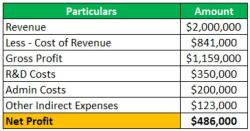How to record reimbursable expenses?
Recording reimbursable expenses accurately is important, whether you're managing expenses for your business or tracking expenses you expect to be reimbursed for. Here are some best practices for recording reimbursable expenses:
Maintain Receipts and Documentation:
- Always keep receipts and documentation for all expenses you expect to be reimbursed for. This provides evidence of the expenditure and is essential for reimbursement and tax purposes.
Categorize Expenses:
- Categorize your expenses to make tracking and reporting easier. Common categories include travel, meals, lodging, transportation, and office supplies.
Use a Separate Reimbursable Expenses Account:
- If you're using accounting software or a separate bank account to manage reimbursable expenses, create a separate account for these expenses. This helps you keep them separate from other financial transactions.
Record Expenses in a Timely Manner:
- Record reimbursable expenses as soon as they occur. Waiting too long can lead to errors and the loss of receipts.
Include All Necessary Information:
- For each expense, record the date, amount, payee or vendor, purpose, and category. If applicable, note any special instructions or notes related to the expense.
Use Digital Tools:
- Consider using expense tracking software or mobile apps to make the process more efficient. Many of these tools allow you to scan and store digital copies of receipts.
Track Mileage:
- If your expenses include mileage, maintain a log of your trips with details like date, starting and ending locations, and the purpose of the trip. Some apps and GPS devices can help with this.
Set Clear Reimbursement Procedures:
- Establish clear procedures for submitting and approving reimbursable expenses within your organization. Make sure all involved parties understand the process.
Submit Expense Reports:
- Compile your reimbursable expenses into an expense report. This report should list all expenses with the supporting documentation attached.
Include Currency Conversions (if applicable):
- If you incur expenses in foreign currencies, ensure that you record the exchange rates and currency conversions accurately.
Confirm Reimbursement Policy:
- Familiarize yourself with your organization's reimbursement policy, if applicable, to understand the limits, approval processes, and any specific requirements.
Retain Copies:
- Keep copies of all expense reports and documentation for your own records. This is especially important if you need to provide additional information or if there are questions about the reimbursement.
Follow Up on Reimbursement:
- If your expenses are not reimbursed in a timely manner, follow up with the appropriate parties to ensure prompt payment.
Consult with Financial or HR Department:
- If you have any questions or uncertainties about the reimbursement process, consult with your organization's financial or HR department for guidance.
Accurate and well-organized records of reimbursable expenses are essential for both personal and business purposes. They not only help you recover your expenses but also allow for proper financial management and compliance with tax regulations.
Recording Reimbursable Expenses: A Step-by-Step Guide
Reimbursable expenses are those that you incur on behalf of your employer or client and that you expect to be reimbursed for. It is important to record reimbursable expenses accurately and in a timely manner so that you can be reimbursed promptly.
Here is a step-by-step guide to recording reimbursable expenses:
- Gather your receipts. Keep all receipts for reimbursable expenses in a safe place. You may need to submit these receipts to your employer or client for reimbursement.
- Enter your expenses into a spreadsheet or accounting software. This will help you to track your expenses and to generate a report for reimbursement.
- Categorize your expenses. This will make it easier to submit your expense report and to get reimbursed. Some common expense categories include travel, meals, lodging, and office supplies.
- Add up your expenses. Once you have categorized your expenses, add them up to get the total amount that you are owed.
- Submit your expense report. Once you have completed your expense report, submit it to your employer or client for reimbursement.
Understanding the Concept of Reimbursable Expenses
Reimbursable expenses are expenses that you incur on behalf of someone else and that you expect to be reimbursed for. This can include expenses that you incur for your employer, client, or customer.
Some common examples of reimbursable expenses include:
- Travel expenses, such as airfare, hotel accommodations, and car rental
- Meal expenses
- Lodging expenses
- Office supplies
- Postage and shipping expenses
- Entertainment expenses
- Client gifts
Documentation and Tracking of Reimbursable Costs
It is important to document and track all reimbursable costs accurately and in a timely manner. This will help you to be reimbursed promptly and to avoid any problems with your expense report.
Here are some tips for documenting and tracking reimbursable costs:
- Keep all receipts for reimbursable expenses in a safe place.
- Enter your expenses into a spreadsheet or accounting software as soon as possible.
- Categorize your expenses by expense type.
- Add up your expenses regularly to get a running total of your reimbursable costs.
Proper Reporting and Reimbursement Procedures
Each employer or client has its own policies and procedures for reporting and reimbursing expenses. It is important to familiarize yourself with these policies and procedures so that you can submit your expense report correctly.
Some common requirements for expense reports include:
- A detailed list of all expenses, including the date, amount, and category of each expense
- Copies of all receipts
- A signed and dated expense report form
Managing Reimbursable Expenses Efficiently and Accurately
There are a number of things you can do to manage reimbursable expenses efficiently and accurately. Here are a few tips:
- Keep a separate bank account for reimbursable expenses. This will make it easier to track your expenses and to reconcile your expense report.
- Use a credit card to pay for reimbursable expenses whenever possible. This will make it easier to keep track of your expenses and to generate a report for reimbursement.
- Submit your expense report as soon as possible after incurring the expenses. This will help to avoid any delays in reimbursement.
By following these tips, you can record and manage reimbursable expenses efficiently and accurately.













